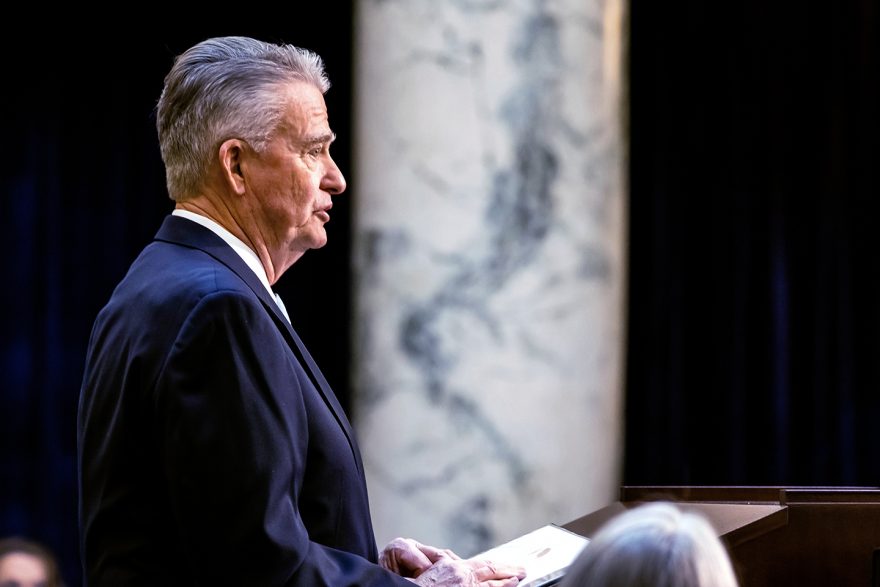Idaho’s ‘Microgrant’ Program for Parents Draws Scrutiny and a State Audit

An effort in Idaho to address learning loss and improve connectivity by funneling taxpayer money directly to families is under review after some ineligible purchases were flagged.
The Empowering Parents microgrant program, for which state lawmakers allocated an initial $50 million of the state’s federal COVID relief to be distributed to families of K-12 students, aims to help qualifying parents and guardians pay for “education services and devices” like tutoring, internet services, and computers.
But, nearly a year after the program launched, those running it are grappling with a couple of challenges — drawing the lines around what is considered educational and cracking down on unqualified purchases.
In June, Gov. Brad Little called for an independent, third-party to conduct a “full financial audit” to better understand the “full scope of the situation,” in a letter sent to the state board of education, which oversees the program. He also called on the board to strengthen accountability and propose any needed changes.
“Robust oversight, documentation, and a dedicated compliance regime are critical to safeguarding the use of scarce taxpayer dollars,” said Little, a Republican, in the letter.
This came after Odyssey, the company contracted by the state to build and run the program’s online portal, flagged some improper purchases made by families, prompting a review by the state board of education.
The internal review found that less than 1 percent of purchases were ineligible — which Odyssey said it is now working to fully refund — but left another 14 percent in question.
Most purchases made through the program were for things like Chromebooks, tablets, and tutoring, according to Odyssey.
They also saw families pay for therapies for their children, including behavioral, speech, and even equine therapy, Odyssey founder and CEO Joseph Connor said in an interview.
And the company worked to add several dozen internet providers to its portal over the last year to meet a higher demand than they originally expected.
“This is a very large program that has helped approximately 50,000 kids across the state of Idaho be able to [cover] education expenses,” Connor said. “By and large, it’s working very well, as intended.”
Most Purchases Deemed Proper
While the independent review is still in the works, the state board of education’s review of “nearly all” the purchases made by grantees through the end of April found that an extremely small portion of them — 0.57 percent — were “ineligible expenses,” according to the summary of findings released at the end of June.
In one example of an ineligible purchase, a parent used the grant funding to pay for a dance class for their child, which included a fee for participating in a competition, Connor said. While paying for the class was considered an eligible educational expense, the state decided grant money should not have been used for the competition fee.
Under Idaho’s process, parents aren’t able to spend the money on anything they want, but rather are limited to making purchases through the online portal, where vendors have to apply and are vetted by Odyssey, then reviewed by the state board.
The total, statewide cost of the ineligible purchases identified by the state board was less than $180,000, according to the summary, which will be reimbursed to the state.
But another 14 percent of purchases during that time period are still under review to determine their eligibility. Some of those purchases will be taken to the program’s Parent Advisory Panel for a decision, including purchases on costumes or athletic gear; equipment such as backpacks, lunch boxes, and computer cases; and items categorized under physical education.
In response to these findings, the state board said it implemented new procedures for reviewing all purchases within 72 hours. Odyssey has also established a new system that requires its staff to approve some items prior to purchases being finalized.
Marketing to Parents
Several states have mechanisms that provide public school funding for parents to purchase private educational services.
In many states, the approach is focused on providing taxpayer money to cover private school tuition, through vouchers. In other states, policymakers have created pools of money, sometimes called education savings accounts, that give families public money to pay private school tuition or a variety of other supplies and expenses. Eleven states have policies supporting education savings accounts, according to Education Week.
These types of efforts could signal a coming trend — one that opens a new door for companies working in the K-12 space to market directly to parents.
As the Empowering Parents program enters its second fiscal year, state officials in Idaho have allocated another $30 million in state funding. Applications open in the fall.
Despite the spending reviews underway, the program has already met some of its goals, Connor said. So far, around 50,000 students have benefitted from the grants, the most possible under the initial funding.
To encourage participation, the company has worked to get the approval process time down from a typical 30 days to under 10 minutes, he said, with applicants only being asked to provide their social security or tax ID number.
“Just because you pass a program doesn’t mean it’s going to be successful,” Connor said. “The thing that I say until I’m red in the face … is that implementation really matters. A new program, just because it’s funded, doesn’t mean that parents are going to apply for it.”
Follow EdWeek Market Brief on Twitter @EdMarketBrief or connect with us on LinkedIn.
Photo by Otto Kitsinger/AP
See also:
